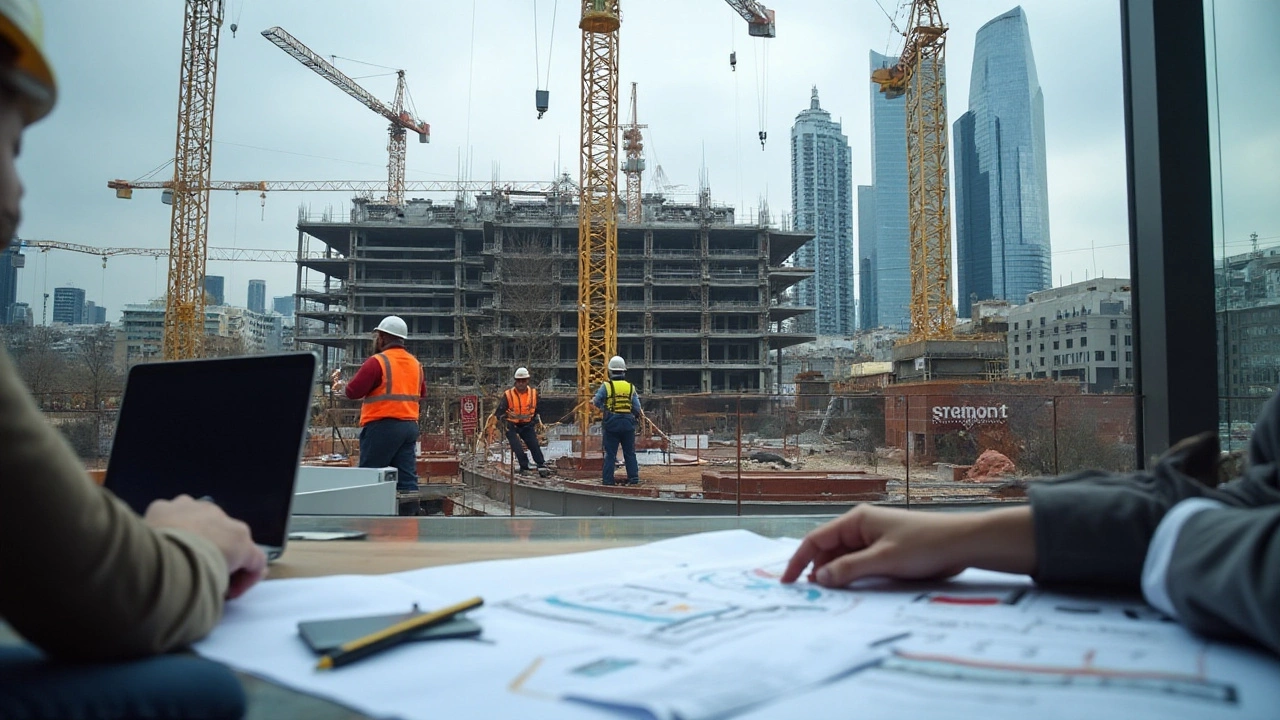Non‑Residential Construction: What You Need to Know
If you own a business, manage a school, or run a warehouse, the building you use is probably a non‑residential project. Unlike a family home, these structures serve a specific purpose – from storing goods to welcoming customers. Knowing the basics helps you plan budgets, pick the right contractor, and avoid costly mistakes.
Common Non‑Residential Project Types
In the UK, the biggest non‑residential categories are commercial, industrial, and institutional buildings. Commercial projects cover shops, offices, restaurants, and hotels. They focus on layout flexibility, customer flow, and often need fast completion to start earning revenue.
Industrial construction includes factories, warehouses, and distribution centres. Here, floor loading, clear‑span spaces, and access for large vehicles are top priorities. Materials like steel and pre‑engineered metal panels dominate because they’re strong and quick to assemble.
Institutional builds such as schools, clinics, and community centres have stricter health and safety rules. They must meet specific fire‑rating standards and provide accessible facilities. Energy efficiency is also a big deal – many institutions aim for government‑backed sustainability targets.
Across all types, planning permission, building regulations, and fire safety codes are mandatory. Skipping any step can delay the project and add extra fees. Using a local architect who knows The Building Regulations (Part B, Part L, etc.) can keep the process smooth.
Choosing the Right Contractor
Finding a contractor who “gets” non‑residential work isn’t the same as hiring a residential handyman. Look for firms with proven experience in similar projects – ask for case studies or site visits. A solid portfolio shows they can manage scale, meet health‑safety standards, and work within commercial timelines.
Check credentials: a valid CSCS card for site workers, ISO 9001 quality management, and relevant insurance (public liability and employer’s liability). Without these, you expose yourself to legal and financial risk.
Ask about project management tools. Modern contractors use software that tracks milestones, budgets, and compliance documents in real time. This transparency helps you spot overruns early and keeps everyone on the same page.
Finally, get a detailed quotation. Break down costs for design, materials, labour, and any specialist services (like fire‑stop installations). A clear quote lets you compare offers fairly and avoid hidden charges later on.
Non‑residential construction can feel overwhelming, but armed with the right knowledge you can steer the project toward success. Focus on the type of building, understand the regulatory checklist, and pick a contractor with the right track record. With these steps, your commercial or industrial space will be up and running on schedule, staying safe, and delivering the performance you expect.

Exploring the Differences: Commercial vs. Non-Residential Construction Explained
Nov 11, 2024, Posted by Damon Blackwood
Commercial and non-residential construction terms are often used interchangeably, yet they entail subtle differences essential for contractors, developers, and stakeholders to understand. This article unravels these nuances by examining what makes commercial construction unique, its legal and regulatory aspects, and how they differ from other non-residential projects. Discover interesting insights into various commercial structures like malls, office buildings, and warehouses, and learn practical tips for navigating these developments. Understanding these distinctions can enhance project execution and planning efficiency.
MORESEARCH HERE
Categories
TAGS
- foundation repair
- commercial construction
- construction
- new builds
- home improvement
- home renovation
- bathroom renovation
- residential construction
- construction materials
- home foundation
- renovation tips
- building types
- contractor
- foundation cracks
- home construction
- architectural services
- building codes
- foundation crack repair
- construction differences
- home inspection